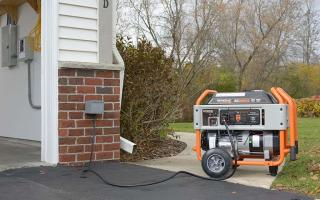Generators and Carbon Monoxide

Safety Tips for Portable Generators
Carbon monoxide deaths associated with generators have spiked in recent years as generator sales have risen. The National Fire Protection Association reports that in 2002 generators were associated with 24 percent of all carbon monoxide deaths, compared to only six percent in 1999. About 40 percent of these deaths occur during the winter months, when people use generators for heat during power outages. Unlike other household appliances, portable generators are powered by gasoline. They pose a greater threat of CO poisoning, fire and shock or electrocution.
Avoiding CO Poisoning
- Carbon monoxide is a deadly gas produced by the incomplete combustion of fuel. Because you can neither see, smell or taste it, CO can build to deadly levels without your ever knowing it.
- Generators are powered by gasoline and, therefore, generate CO. Never operate a generator indoors - including in a basement or garage or in areas with ventilation. Operate generators away from windows, doors and vents that could allow CO to enter your home.
- Generators emit far higher levels of carbon monoxide than an automobile. Opening doors and window or using fans will not prevent CO build-up in the home.
- The initial symptoms of CO poisoning resemble ordinary flu symptoms. If you start to feel sick, dizzy, or weak while a generator is in use, leave the house and get fresh air immediately. Call 911.
- Consider installing a CO alarm. These alarms sound when levels of CO build to unsafe levels. They are available in home supply and hardware stores.
Avoiding Electric Shock and Electrocution
Follow these tips to avoid the danger of electrocution or shock when using a generator:
- Plug in only the wattage the generator is rated for, using three-pin, grounded cords designed for outdoor use. Never plug a generator into a wall socket; this can lead to electrical damages to the house, generator, and even to electrocution of utility workers or others using the same utility transformer.
- Because portable generators produce electricity, they should never be used in the rain or standing water. Operate on a dry surface under an open, canopy-like structure. Never touch a generator while standing in water or with wet hands.
- Grounding is essential for all models, even those equipped with Ground Fault Interrupters. If the generator is not grounded, the GFI might not function at all. Refer to the owner’s manual for the proper sizes and materials recommended for grounding.
Avoiding Fire Hazards
Follow these tips to avoid the threat of fire:
- Before refueling, always turn the engine off and allow it to cool completely. Fuel spilled on hot engine parts can ignite.
- Invisible fumes from fuel can travel and become ignited by other appliances, such as the pilot from a gas water heater. Store gasoline, kerosene, propane or any flammable liquid outside living areas in labeled containers.
While portable generators can be useful in filling the need for temporary power, great care should be taken before and during use. Thoroughly read and follow the manufacturer's directions to ensure that you understand how to use a generator safely.